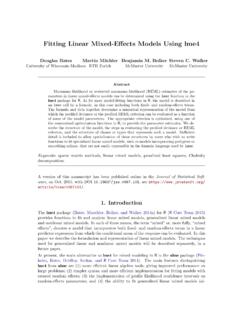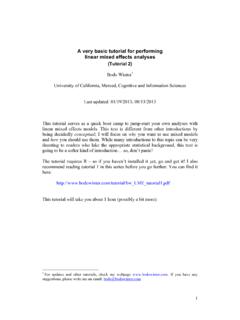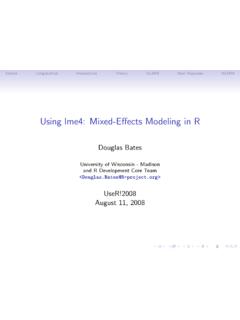Transcription of Title stata.com mixed — Multilevel mixed-effects linear ...
1 Multilevel mixed - effects linear regressionDescriptionQuick startMenuSyntaxOptionsRemarks and examplesStored resultsMethods and formulasAcknowledgmentsReferencesAlso seeDescriptionmixedfits linear mixed - effects models . These models are also known as Multilevel models orhierarchical linear models. The overall error distribution of the linear mixed -effects model is assumed tobe Gaussian, and heteroskedasticity and correlations within lowest-level groups also may be startLinear mixed -effects model ofyonxwith random intercepts bylev2mixed y x || lev2:As above, but perform restricted maximum-likelihood (REML) estimation instead of the defaultmaximum likelihood (ML) estimationmixed y x || lev2:, remlAs above, but perform small-sample inference onxusing the Kenward Roger degrees of freedom(DF) methodmixed y x || lev2:, reml dfmethod(kroger)Add random coefficients onxmixed y x || lev2: xAs above, but allow correlation between the random slopes and interceptsmixed y x || lev2: x, covariance(unstructured)Three-level model with random intercepts bylev2andlev3forlev2nested withinlev3mixed y x || lev3: || lev2:Crossed-effects model with two-way crossed effects by factorsaandbmixed y x || _ || b.
2 MenuStatistics> Multilevel mixed - effects models > linear regression12 mixed Multilevel mixed - effects linear regressionSyntaxmixeddepvar feequation[||reequation] [|| ] [,options]where the syntax offeequationis[indepvars] [if] [in] [weight] [,feoptions]and the syntax ofreequationis one of the following:for random coefficients and interceptslevelvar:[varlist] [,reoptions]for random effects among the values of a factor variable in a crossed-effects modellevelvar: [,reoptions]levelvaris a variable identifying the group structure for the random effects at that level or isallrepresenting one group comprising all constant term from the fixed-effects equationconstraints(constraints)apply specified linear constraintsreoptionsDescriptionModelcova riance(vartype)variance covariance structure of the random effectsnoconstantsuppress constant term from the random -effects equationfweight(exp)frequency weights at higher levelspweight(exp)sampling weights at higher levelscollinearkeep collinear variablesmixed Multilevel mixed - effects linear regression 3optionsDescriptionModelmlefit model via maximum likelihood.
3 The defaultremlfit model via restricted maximum likelihooddfmethod(dfmethod)specify method for computingDFof atdistributionresiduals(restype[,resopts ])structure of residual errorspwscale(scalemethod)control scaling of sampling weights in two-level modelsSE/Robustvce(vcetype)vcetypemay beoim,robust, orclusterclustvar; types otherthanoimmay not be combined withdfmethod()Reportinglevel(#)set confidence level; default islevel(95)varianceshow random -effects and residual-error parameter estimates asvariances and covariances; the defaultstddeviationsshow random -effects and residual-error parameter estimates asstandard deviations and correlationsdftable(dftable)specify contents of fixed-effects table; requiresdfmethod()atestimationnoretables uppress random -effects tablenofetablesuppress fixed-effects tableestmetricshow parameter estimates as stored ine(b)noheadersuppress output headernogroupsuppress table summarizing groupsnostderrdo not estimate standard errors of random -effects parametersnocnsreportdo not display constraintsdisplayoptionscontrol columns and column formats, row spacing, line width,display of omitted variables and base and empty cells, andfactor-variable labelingEM optionsemiterate(#)number ofEMiterations; default isemiterate(20)emtolerance(#)EMconvergen ce tolerance; default isemtolerance(1e-10)emonlyfit model exclusively usingEMemlogshowEMiteration logemdotsshowEMiterations as dotsMaximizationmaximizeoptionscontrol the maximization process; seldom usedmatsqrtparameterize variance components using matrix square roots.
4 The defaultmatlogparameterize variance components using matrix logarithmssmallreplay small-sample inference resultscoeflegenddisplay legend instead of statistics4 mixed Multilevel mixed - effects linear regressionvartypeDescriptionindependento ne unique variance parameter per random effect , all covariances 0;the default unless is usedexchangeableequal variances for random effects, and one common pairwisecovarianceidentityequal variances for random effects, all covariances 0;the default if is usedunstructuredall variances and covariances to be distinctly estimateddfmethodDescriptionresidualresi dual degrees of freedom,n rank(X)repeatedrepeated-measuresANOVA anovaANOVA satterthwaite[,dfopts]generalized Satterthwaite approximation;REML estimation onlykroger[,dfopts]Kenward Roger;REML estimation Gaussian within-group errors with one common variance;the defaultexchangeablewithin-group errors with equal variances and one commoncovariancear[#]within-group errors with autoregressive (AR) structure of order#,AR(#);ar 1is implied byarma[#]within-group errors with moving-average (MA) structure of order#,MA(#);ma 1is implied bymaunstructuredwithin-group errors with distinct variances and covariancesbanded[#]within-group errors with distinct variances and covariances withinfirst#off-diagonals;bandedimplies all matrix bands(unstructured)toeplitz[#]within-gro up errors have Toeplitz structure of order#.
5 Toeplitzimplies that all matrix off-diagonals be estimatedexponentialwithin-group errors with an exponential function for the pairwisecorrelations and one overall error variancescalemethodDescriptionsizescale first-level (observation-level) weights to sum to the sample sizeof their corresponding second-level clustereffectivescale first-level weights to sum to the effective sample size of theircorresponding second-level clustergkset second-level weights to the cluster averages of the products ofthe weights at both levels and first-level weights to 1mixed Multilevel mixed - effects linear regression 5dftableDescriptiondefaulttest statistics,p-values, and confidence intervals; the defaultciDFs and confidence intervalspvalueDFs, test statistics, andp-valuesindepvarsandvarlistmay contain factor variables; see[U] Factor ,indepvars, andvarlistmay contain time-series operators; see[U] Time-series ,bootstrap,by,collect,jackknife,mi estimate,rolling, andstatsbyare allowed; see[U] Prefixcommands.
6 For more details, see [BAYES]bayes: estimateis not allowed ifdfmethod()is are not allowed with thebootstrapprefix; see [R] andfweights are allowed; see[U] weight. However, no weights are allowed if either optionremlor optiondfmethod()is not appear in the dialog [U] 20 Estimation and postestimation commandsfor more capabilities of estimation model noconstantsuppresses the constant (intercept) term and may be specified for the fixed-effectsequation and for any of or all the random -effects (vartype)specifies the structure of the covariance matrix for the random effects andmay be specified for each random -effects one of the following:independent,exchangeable,ident ity, for a distinct variance for each random effect within a random -effects equationand assumes that all covariances are one common variance for all random effects and one common short for multiple of the identity ; that is, all variances are equal and all covariancesare for all variances and covariances to be distinct.
7 If an equation consistsofprandom-effects terms, the unstructured covariance matrix will havep(p+1)/2 (independent)is the default, except when is used, in whichcasecovariance(identity)is the default and onlycovariance(identity)andcovari-ance(e xchangeable)are (exp)specifies frequency weights at higher levels in a Multilevel model , whereas frequencyweights at the first level (the observation level) are specified in the usual manner, for example,[fw=fwtvar1].expcan be any valid Stata variable, and you can specifyfweight()at levels twoand higher of a Multilevel model . For example, in the two-level model . mixedfixed_portion[fw = wt1] || school:.., fweight(wt2)..the variablewt1would hold the first-level (the observation-level) frequency weights, andwt2would hold the second-level (the school-level) frequency mixed Multilevel mixed - effects linear regressionpweight(exp)specifies sampling weights at higher levels in a Multilevel model , whereas samplingweights at the first level (the observation level) are specified in the usual manner, for example,[pw=pwtvar1].
8 Expcan be any valid Stata variable, and you can specifypweight()at levels twoand higher of a Multilevel model . For example, in the two-level model . mixedfixed_portion[pw = wt1] || school:.., pweight(wt2)..variablewt1would hold the first-level (the observation-level) sampling weights, andwt2wouldhold the second-level (the school-level) sampling datainRemarks and examplesbelow for more information regarding the use ofsampling weights in Multilevel the statistical method for fitting the , the default, specifies that the model be fit usingML. Optionsdfmethod(satterthwaite)anddfmetho d(kroger)are not supported that the model be fit usingREML, also known as residual maximum (dfmethod)requests that reported hypothesis tests for the fixed effects (coefficients) usea small-sample adjustment. By default, inference is based on a large-sample approximation ofthe sampling distributions of the test statistics by normal and 2distributions.
9 Caution should beexercised when choosing aDFmethod; seeSmall-sample inference for fixed effectsinRemarksand examplesfor (dfmethod)is specified, the sampling distributions of the test statistics areapproximated by atdistribution, according to the requested method for computing one of the following:residual,repeated,anova,satter thwaite, the residual degrees of freedom,n rank(X), as theDFfor all tests of fixedeffects. For a linear model without random effects with independent and identically distributed( ) errors, the distributions of the test statistics for fixed effects aretdistributions with theresidualDF. For other mixed - effects models , this method typically leads to poor approximationsof the actual sampling distributions of the test the repeated-measuresANOVA method for computing theDF. It is used with balancedrepeated-measures designs with spherical correlation error structures. It partitions the residualdegrees of freedom into the between-subject degrees of freedom and the within-subject degrees supported only with two-level models.
10 For more complex mixed -effectsmodels or with unbalanced data, this method typically leads to poor approximations of theactual sampling distributions of the test the traditionalANOVA method for computing theDF. According to this method, theDFfor a test of a fixed effect of a given variable depends on whether that variable is also included inany of the random -effects equations. For traditionalANOVA models with balanced designs, thismethod provides exact sampling distributions of the test statistics. For more complex mixed - effects models or with unbalanced data, this method typically leads to poor approximations ofthe actual sampling distributions of the test [,dfopts]implements a generalization of the Satterthwaite (1946) approximationof the unknown sampling distributions of test statistics for complex linear mixed - effect method is supported only [,dfopts]implements the Kenward and Roger (1997) method, which is designed toapproximate unknown sampling distributions of test statistics for complex linear mixed -effectsmodels.
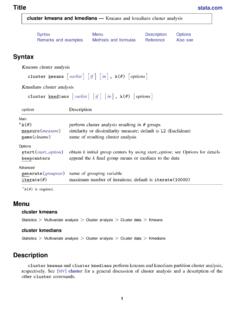
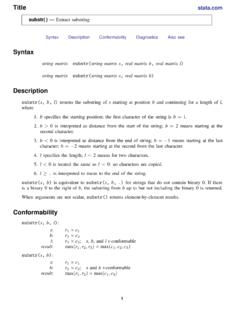
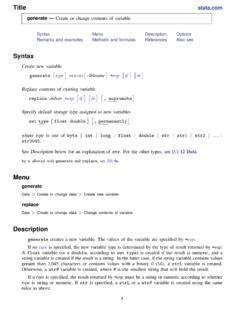
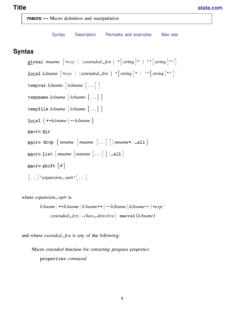
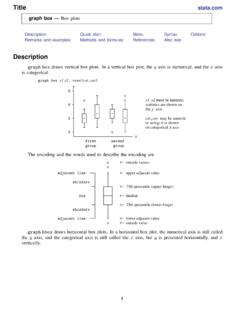
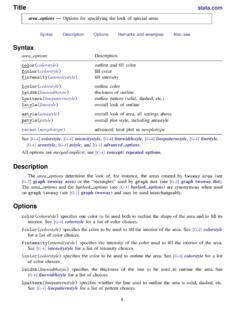
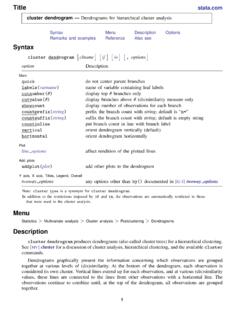
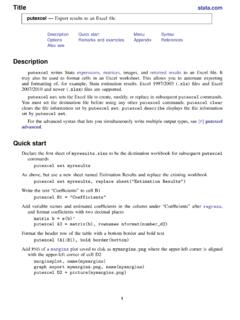
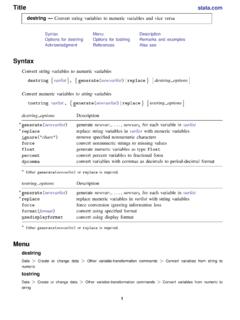
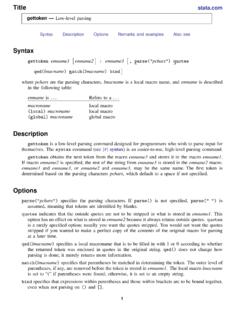
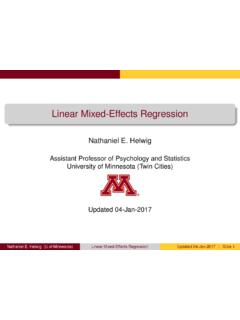
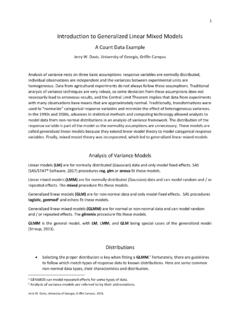
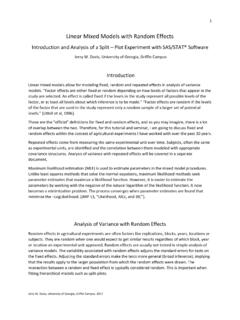
![[ME] Multilevel Mixed Effects - Stata](/cache/preview/4/7/d/4/7/0/c/8/thumb-47d470c861983dd93e6de78ee5724463.jpg)
